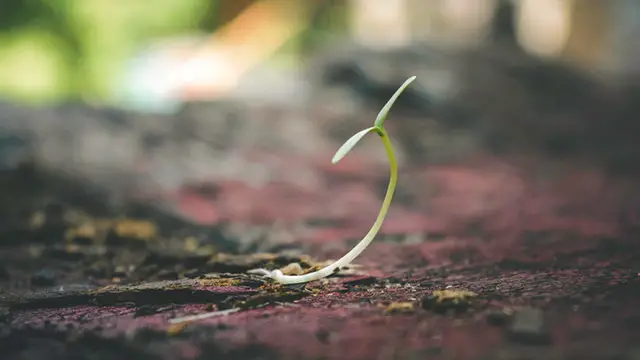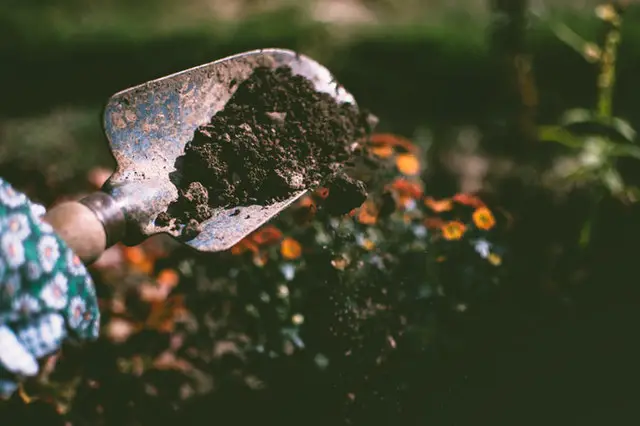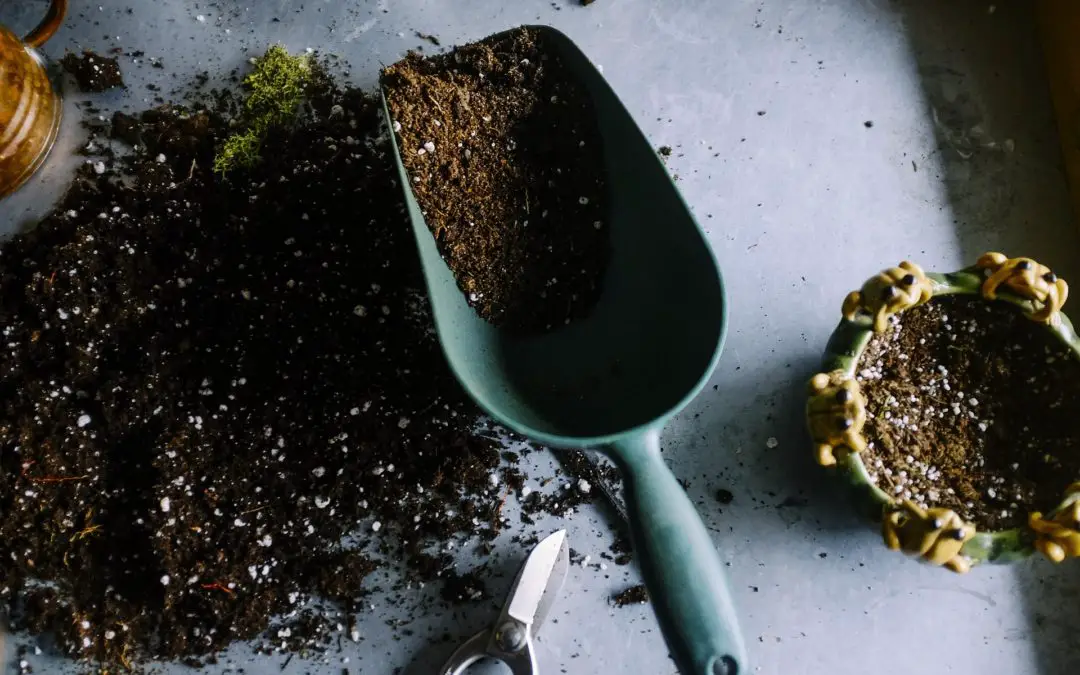So you’ve been wondering about 0-20-20 fertilizer, and maybe you’re growing clover as well. What is it? And how can it be used?
0-20-20 fertilizer is a zero nitrogen fertilizer with 20% potassium and 20% phosphorus. You can make your own by mixing a high phosphorus fertilizer like DAP (Diammonium Phosphate) and a high potassium fertilizer like potassium sulfate.
Both of these should be readily available at a farm supply shop. Alternatives include using a slow nitrogen release fertilizer, or a low nitrogen fertilizer.
There are many types and combinations of fertilizers you can apply. Every plant and soil combination wants a slightly different combination of the different N-P-K (Nitrogen, Phosphorus, Potassium) nutrients. It’s up to you to build a soil that will allow your chosen plants to thrive. And the needs change through time.
A 0-20-20 Fertilizer is a particularly challenging fertilizer to source. You probably won’t find it at the big hardware stores, and it might even be a challenge to find in stock at farm supply outfits. 0-20-20 can really serve its purpose, so why is it so hard to find?
Zero nitrogen and low nitrogen fertilizers are a bit of a Niche, but there are some great ways you can get the results you’re looking for.
What do the numbers in fertilizer mean?

The numbers in fertilizer are simple to interpret once you know the trick. The first number stands for the % of Nitrogen (N), the second number stands for the % of Phosphorus (P), and the third number is the % of Potassium (K).
So a 10-20-30 Fertilizer has:
- 10 % Nitrogen (N)
- 20 % Phosphorus (P)
- 30 % Potassium (K)
You might notice this doesn’t add up to 100%, but 50%. The other 50% is often called filler. It can also contain all the other things plants need to thrive, the secondary or micro-nutrients.
Filler can include ingredients to delay the release of the fertilizer so it acts over a long period, which helps prevent roots and young shoots from fertilizer or chemical burn. And finally, it can also help keep the fertilizer from clumping up and drying out. Common fillers are sand or other crushed rocks like limestone.
What is 0-20-20 fertilizer?
A 0-20-20 fertilizer is a fertilizer with no Nitrogen in it. It could be called a zero nitrogen fertilizer, or a low nitrogen fertilizer.
Nitrogen is one of the main elements in chlorophyll (the molecule that gives plants their green color) and important proteins. Nitrogen promotes vegetative plant growth. Nitrogen is usually one of the more soluble elements in the soil.
Phosphorus helps plants convert other nutrients into usable building blocks with which to grow. Phosphorus is an essential element for plants and can limit plant growth if not available in sufficient quantity. Phosphorus helps with blooms and root growth.
Potassium is mainly involved in helping ion movement and metabolic processes in plants. Potassium helps plants operate all around, being involved in most important plant processes. It also helps with root development and disease resistance.
Why use a 0-20-20 fertilizer?
Fertilizers are used to increase the levels of nutrients that are deficient in the soil. If you’re adding a 0-20-20 fertilizer, you’re increasing phosphorus and potassium levels, but not nitrogen.
People use zero nitrogen fertilizers for a few reasons. Two common ones are winterizing, and fertilizing clover. A 0-20-20 fertilizer won’t be the right fertilizer for all fruits, vegetables, grains, and other plants, but it has good Niche uses.
Winterizing
Zero nitrogen fertilizer can be marketed as a winterizing fertilizer. It is applied in the fall months leading up to winter. The idea being that there’s not a lot of vegetative growth occurring during winter, so plants don’t need nitrogen.
Plants aren’t consuming a lot of Nitrogen while they’re dormant in the winter, and snow and rain can easily wash Nitrogen away because it’s so soluble.
Sometimes fertilizer with low Nitrogen (or High Phosphorus or Potassium, depending how you look at it) are also called winterizing fertilizers.
So it’s not as much that Nitrogen is undesirable in a winterization situation, it’s that the money is better spent elsewhere. If the nitrogen is just going to end up in rivers, and streams, why waste it.
There are a few alternative ways to make sure Nitrogen isn’t going to waste:
- Use a fertilizer with some mechanism for slowing the release of nitrogen. Triazone or Methylene Urea are nitrogen containing compounds that release nitrogen more slowly.
- Fertilize after the winter! Simple enough!
Fertilizing clover for wild animal food plots
A lot of people fertilize clover to attract white-tail deer or turkeys. The animals love clover, it’s packed with nutrients and a really good food source.
The practice was first started in 1988 by the Whitetail Institute of America.
There is an incredible (and surprisingly in-depth) wealth of knowledge online about food plots. The general idea is to supplement the naturally available food for game animals, so they’re able to thrive and are attracted to an area.

Alternatives to 0-20-20 fertilizer
As technologies and supply chains develop, new fertilizers are available. A large reason for the difficulty in finding pre-mixed 0-20-20 fertilizer is that there are other methods of ensuring the Nitrogen doesn’t go to waste.
One is to use a slower-release nitrogen component, like Triazone or Methylene Urea.
Another method is to mix your own low or zero nitrogen fertilizer
0-10-10 fertilizer
This can be a great alternative to 0-20-20, and many people have seen success using it to boost food plots for whitetail or turkeys. Marketed for abundant, colorful flowers and vigorous root growth.
Works best on:
- Food plots (clover for example)
- Outdoor plants
- Flower gardens
- Bulbs, Roses
- Vegetable and Herb Gardens
- Berries
- Indoor Plants that bloom
This is a great alternative for 0-20-20, it contains more filler, but otherwise has the same macro-nutrient ratio.
How to mix your own 0-20-20 fertilizer.
Find a high phosphorus fertilizer like DAP (Diammonium Phosphate) and a high potassium fertilizer like potassium sulfate or potash and mix them.
0-44-0 and 0-0-50 can be mixed to get a fertilizer that has zero nitrogen and high potassium and phosphorus. If you mixed them 50/50 you would get 0-22-25 which is pretty close to 0-20-20!
5-20-20 or 6-24-24 VS 0-20-20 fertilizer
Another great option. It’s not zero Nitrogen, but they are good all-around fertilizers that could work in a pinch. The other thing to consider is that if a zero nitrogen fertilizer is hard to track down, it might be worth using one with a bit of nitrogen even if it will go to waste. This is for smaller applications.
5-20-20 and 6-24-24 are likely the same fertilizer, but different concentrations (5-20-20 having slightly more filler).
For a larger application you absolutely don’t want to over-fertilize if you can avoid it.
What is the best fertilizer for blooming plants?
A specialized fertilizer may also be called a bloom booster. A bloom booster or blooming fertilizer is designed to help plants develop large healthy blooms and fruits. This type of growth requires higher Potassium and Phosphorus levels.
Related questions
 Where to buy 0-20-20 Fertilizer online
Where to buy 0-20-20 Fertilizer online
Unfortunately, I haven’t been able to source any 0-20-20 fertilizer online.
What is a low nitrogen fertilizer?
A low nitrogen fertilizer is low in the first number. 6-24-24 would be an example of a low nitrogen fertilizer.
Is Miracle Gro low in nitrogen?
Miracle Gro offers a lot of different products, some are low in nitrogen, some aren’t! What you need to do is look for three numbers on the package. If the first one is lower than the other two, it’s a low nitrogen fertilizer.
What’s an organic low nitrogen fertilizer?
Your best bet is probably starting with a base of manure and adding organic ingredients that are high in potassium and phosphorus. Straw and sawdust are both low in Nitrogen. Bone meal is finely ground bone, high in calcium, and contains phosphate. Shellfish fertilizer is high in calcium and phosphates like bones. Greensand, ash from hardwood, and help meal can be used to supplement potassium.

I’m Alex Lafreniere. I learned a lot about plants when I built and operated a landscaping company. But, there’s always more to learn. Ever since travelling across the world, I’ve wanted to find ways to bring more tropical and exotic plants into my life. This is the site where I share everything I’ve learned with you.
This site is owned and operated by Plant Hardware, a sole proprietor headquartered in Calgary, Canada. Plant Hardware is a participant in the Amazon Services LLC Associates Program, an affiliate advertising program designed to provide a means for sites to earn advertising fees by advertising and linking to Amazon.com.Plant Hardware may also participate in affiliate programs with Bluehost, Clickbank, CJ, ShareASale, and other sites. Plant Hardware is compensated for referring traffic and business to these companies.

